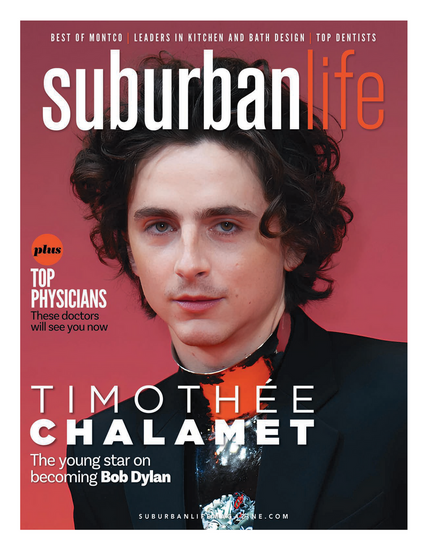
Patricia Roberts admires the Fortune magazine cover in her office as though it were a rare jewel. The cover, from May 13, 2002, shows a photo of 13-year-old Charles Schwab, who would go on to found and serve as chairman of Charles Schwab Corp., among the largest, most-profitable discount brokerage companies in America.
That toothy, fresh-faced boy would go on to earn a B.A. in economics and an MBA from Stanford University. In the March 2011 issue of Money magazine, Schwab’s company was listed as the most admired in the industry, and he was listed in Forbes magazine this year as the 67th wealthiest person in the United States, at $4.7 billion.
The title on the May 2002, Fortune cover, “The Dyslexic CEO.”
“There’s an interesting study out of the United Kingdom that shows that 35 percent of our most successful CEOs and entrepreneurs have learning disabilities,” says Roberts, co-founder and executive director of AIM~Academy in Manayunk, a school for bright students, grades 1 through 12, with language-based disabilities, such as dyslexia and other reading difficulties, including spelling and writing challenges. “What a story like Schwab’s can do for students who learn differently, and their parents, is show them what’s possible.”
The subtitle on the Fortune cover is “Charles Schwab, Richard Branson, Craig McCaw and John Chambers triumphed over America’s No. 1 learning disorder. Your child can, too.” That comforting, encouraging message to parents whose children learn differently is echoed by Roberts and AIM co-founder and associate director/director of admissions Nancy Blair.
“We’re focused on bringing the research to bear on children with learning differences in a rigorous arts-based learning environment mapped to the Pennsylvania Common Core State Standards,” Roberts says. “We really believe children need to be engaged and fully immersed in the content to have a deep and enduring understanding of this information. Colleges are demanding that students be better prepared to explore complex information in greater depth. Our AIM seniors are dual enrolled at Cabrini College this semester and are finding success due to the depth of reading and writing processes that have been developed.
“These children are our future leaders. They just learn differently.”
AIM was founded in 2006 and modeled after the highly successful academic program created by the late Sally Smith of The Lab School of Washington, D.C., which has been teaching children who have learning disabilities for 43 years and has more than 90 percent of its graduates attending college. Roberts and Blair worked closely with Smith, who had a child who learned differently, before deciding to found AIM.
In addition to dyslexia, other learning disabilities seen in children at AIM are dysgraphia (difficulty with the writing process) and dyscalculia (difficulties with understanding math).
While other schools in the greater Philadelphia area offer learning-disabled children an education, AIM incorporates visual and performing arts with rigorous academics to meet the individual learning styles of its students. AIM students are taught the school’s mantra—“Live It, Learn It”—through educational immersion, research-based learning strategies and assistive technology.
At AIM, all classroom teachers are trained in the Wilson Language System and LETRS (Language Essentials for Teachers of Reading and Spelling) program, and are certified in special education, reading and/or subject expertise, and many have master’s degrees in special education and reading. AIM devotes more than 9 percent of its budget to professional development to keep its staff current with the latest research. This continual dedication to the research is why AIM has six college professors on staff.
The AIM staff also includes full-time psychologists, speech language pathologists and occupational therapists who provide classroom instruction, teacher and parent consultation, and therapy and support to students. Nancy Hennessey, an internationally recognized consultant and past president of the International Dyslexia Association, consults with AIM staff and faculty in reading, writing, spelling and vocabulary.
“My daughter, Meg, has made terrific progress since coming to AIM in the middle of second grade,” says Allison Arfaa, of Haverford, whose daughter is in fourth grade. “It’s been remarkable. The school is incredibly supportive and in tune to what the kids need. Meg is thriving in every way possible. Even though she’s not reading the way she envisions she should, she is reading, and that’s a huge jump from not being able to read anything. And her writing is also coming along.
“It’s all because of the strategies of AIM. The school just oozes energy, happiness and enthusiasm. The children are engaged. It celebrates the things kids do well, and helps them with things they don’t. She’s happy she’s there, and so are we.”
Overcoming Obstacles
In the meantime, AIM continues to grow. What began in a little school building in Philadelphia with just 24 children has grown to a school with 156 students and the first graduating class slated for next June. The school will move into a state-of-the-art facility in Conshohocken in January.
When it comes to giving students the very best opportunity to learn, AIM covers all the bases. Competitive sports teams, creative drama and arts programs, and even a broadcasting studio provide opportunities for students to explore their unique talents.
“We’re always looking for ways to bring in the latest research into the classroom,” Blair says. “I was formerly a nurse anesthetist. Being in the medical field, I always looked at what the research supported. Sadly, it is taking approximately 10 years for the research to get into the classroom. Our students cannot wait that long. Dr. Sally Shaywitz, a professor of pediatric neurology at Yale University, published a paper that demonstrated that if you provide evidence-based reading intervention to children who are struggling readers, you can actually reorganize the brain and help the child to develop the word-forming area on the left side of the brain that is so critical for fluency. This is what I find so exciting.”
Learning disability has become something of an epidemic in the United States. One in five students, or 15 to 20 percent of the population, has a language-based learning disability. And although less than 33 percent of the children with reading disabilities are receiving school services to help them, about 66 percent who show early reading difficulties can be helped to overcome those, to a large extent, except for those with dyslexia.
Helping AIM students overcome difficulties in learning strikes as close as possible to the hearts of Roberts and Blair, each of whom has a daughter with dyslexia.
“We met when our daughters were in first grade, and they’ve changed our lives by putting our futures on a different track,” Blair says. “My daughter Colleen and Pat’s daughter Morgan were diagnosed when they were around four years old. Fortunately, we were able to get them the support that they needed. That being said, it was not always easy.”
Adds Roberts: “Our message to families is do not delay. Delays in learning to speak, difficulty learning the alphabet or numbers, confusing words with others that sound similar and/or difficulty rhyming are all warning signs and need to be addressed. After fourth grade, statistics show that it takes four times as long to close the gap. Our advice is to run—do not walk—to understand the research of reading and writing.”
Colleen Blair and Morgan Roberts are prime examples of the positive results when addressing learning difficulties early on. Both are in their junior year at Muskingum University, in Ohio.
“This is a story of two moms and their passion not only for their own children who had learning differences, but also for others like them,” Roberts says. Today, when she speaks to a student, she will often show them the Fortune cover bearing the image of Charles Schwab, The Dyslexic CEO.
“I tell them, ‘I’m going to cut out your picture and put it on this magazine cover because I know you can be this successful,’” she says. “I do that because I know it’s possible.”
Academy In Manayunk
Lower School
169 Conarroe Street
Philadelphia, PA 19127
Office: 215-483-2461
Middle and Upper Schools
119 Rector Street
Philadelphia, PA 19127
Office: 215-483-1776
New Combined Campus opening 2012:
1200 River Road
Conshohocken, PA 19428
Website: www.aimpa.org
E-mail: admissions@aimpa.org
Phil Gianficaro is an award-winning writer based in Doylestown.


